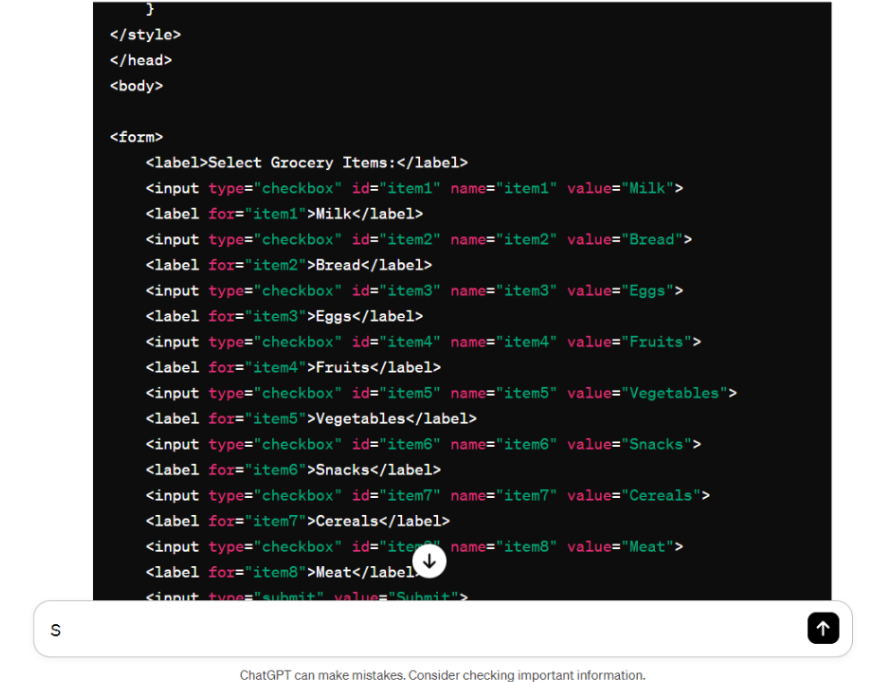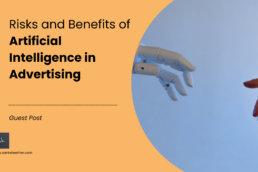A guest post on How to Use ChatGPT for Web Design by John Ahya, Webdesk Solution
Using ChatGPT and other forms of artificial intelligence (AI) in web design can completely change how business owners handle their online presence. ChatGPT’s sophisticated features make it a useful tool to accelerate the web design process and produce visually appealing websites.
From generating codes to content to layout and writing blog articles and product descriptions, ChatGPT guarantees uniformity in messaging and tone throughout the website while saving time and money.
Business owners can build visually appealing websites that effectively engage their target audience, produce high-quality content, and streamline workflows by integrating ChatGPT into their web design process.
Are you curious to learn more? Here are some interesting ways to leverage ChatGPT to create a stunning and functional website for your business.
Table of Contents
What is ChatGPT?
OpenAI created ChatGPT, a sizeable language model that can produce text that appears human. The model can write articles, generate code, and respond to queries since it has been trained on diverse text data. It is an excellent tool for website building because it may help create high-quality content for your website.
(Read also: AI For B2B Marketing And Sales: Easy Guide To Scale Your Business)
How ChatGPT Can Help with Web Design?
ChatGPT is more than just a text generator. It can also be used to develop ideas and help with different parts of making a website. Here are some ways the chatbot can assist you in creating a website:
Code Generation and Documentation
ChatGPT streamlines the documentation and code-generating procedures, revolutionizing web design. By saving time and effort compared to manual writing, it gives developers and designers more leverage by producing neat, effective code snippets depending on input from the user.
Furthermore, GPT contributes to the automation of the documentation process by offering brief descriptions of the functionality of the code and adding comments as needed. This increases teamwork among members while also making the code easier to read.
Let’s understand it with a relevant example:
Prompt:
Create a code that makes an opt-in form for customers to select various grocery items
Result:

Here, developers can carefully ascertain the objective of particular code segments and implement the requisite changes, resulting in enhanced code quality and speedier development cycles.
Bug Fixing and Troubleshooting
In the ever-changing world of web design, ChatGPT is crucial for quickly locating and fixing issues. Through the evaluation of error logs and user feedback, ChatGPT can quickly identify possible problems with the website code.
It then makes recommendations for easy and effective solutions that will shorten downtime and simplify the troubleshooting procedure. This proactive strategy boosts the website’s dependability and guarantees a flawless customer experience.
For instance, ChatGPT can identify typical errors that developers can quickly fix, including broken links or problems with compatibility across various browsers and devices.
Organizations can maintain a high-performing website that satisfies customer expectations and encourages engagement by utilizing ChatGPT for issue fixes and troubleshooting.
Website Design Tips
ChatGPT provides insightful analysis and suggestions to improve website design. To provide design components, layouts, and color schemes that maximize the user experience, it examines consumer preferences and industry trends.
For instance, to guarantee that the website is both aesthetically pleasing and functional across a variety of devices, ChatGPT would advise putting responsive design ideas into practice.
Toronto’s professional web design company creates visually appealing and user-friendly websites that captivate visitors and generate engagement by implementing such ChatGPT outputs.
Automating Quality Assurance and Testing
ChatGPT ensures that website functionality and performance meet expectations by automating testing and quality assurance (QA) procedures. To find errors and inconsistencies, it creates test cases based on user scenarios and automatically runs them.
Furthermore, ChatGPT evaluates QA reports and offers suggestions for enhancing the functionality of websites and user experience.
Personalize User Experience
Modern web design places a strong emphasis on personalizing the user experience, and artificial intelligence (AI) and machine learning (ML) are essential tools for achieving this.
Large volumes of user data, including browsing history, demographics, and interactions, are analyzed by ML algorithms to get insight into the unique preferences and behavioral patterns of each individual.
Websites can utilize this data to dynamically modify content, layout, and suggestions to meet each user’s individual requirements and preferences.
A ChatGPT AI chatbot, for example, can hold customized conversations with users, offering advice and support tailored to their individual needs and interests. AI-based recommendation engines also examine user behavior to make relevant product, article, or content recommendations that increase engagement and boost conversions.
Works As the Helping Hand of Graphic Designers
Additionally, when designers are having trouble coming up with ideas, ChatGPT can provide them with other options. Even if a designer can implement and understand the latest trends in graphic design, they require assistance in figuring out how to use them most effectively in a fresh design.
In this case, ChatGPT can serve as an assistant. A designer can share with ChatGPT all the information they know about their existing design and a few ideas they would like to test out, and the chatbot will provide comments regarding the possibilities.
Furthermore, ChatGPT Plus users can create infographics with a simple text query thanks to OpenAI’s DALL-E 3 launch.
Pros and Cons of Using ChatGPT for Web Design
ChatGPT can be a valuable resource for web designers to simplify some of the operations, but as we know, every coin has two sides, same way using ChatGPT for website designing has a certain set of pros and cons. Let’s check them out.
Pros
- By offering prompt advice and support, ChatGPT swifts the process of creating websites while conserving time and energy.
- ChatGPT improves the overall aesthetics and user experience of websites by providing unique solutions and novel ideas for design aspects.
- Because ChatGPT is always open, users may get help and direction anytime they need it, no matter where or in their time zone.
Cons
- Because ChatGPT’s answers are predicated on pre-existing data, they might only sometimes offer precise or tailored solutions to complex or particular website design problems.
- A user’s inventiveness and problem-solving abilities may be restricted if they exclusively use ChatGPT to create websites, which could hinder their professional development as a web designer.
Summary
In the process of website creation, ChatGPT is revolutionary because it offers a creative and affordable way to produce high-quality and economical content. ChatGPT makes it simple to design a website that looks professional, whether you’re creating a personal blog or a company website.
If you are still trying to decide whether to use ChatGPT in your website design process, contact WebDesk Solution. Their professionals have excellent web design experience and they can use ChatGPT effectively to enhance your website design.
Related Posts
March 18, 2024
Technical SEO Audit: A 6-Step Guide to Improving Website Performance
0 Comments9 Minutes


